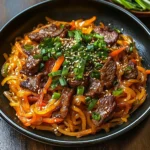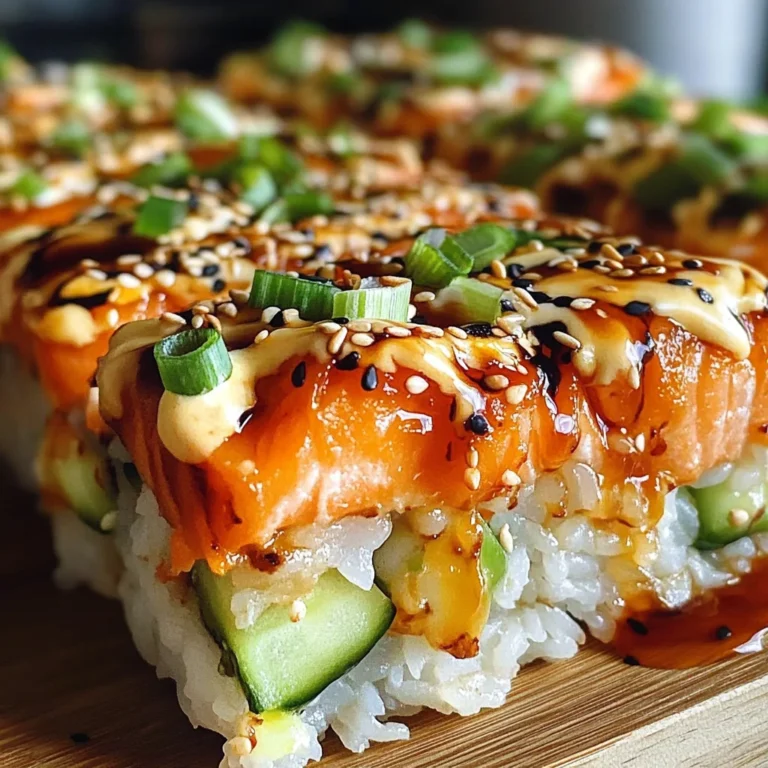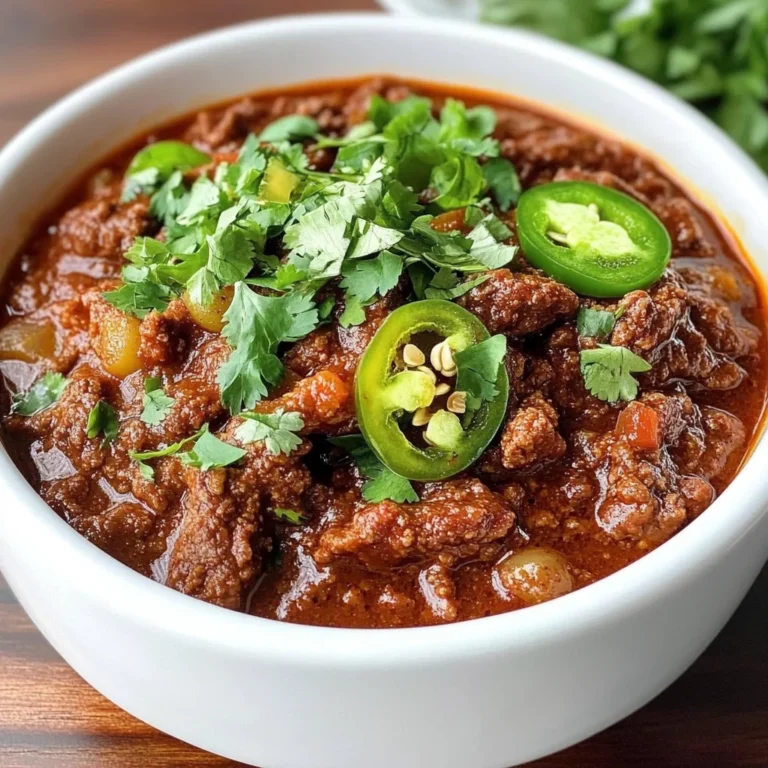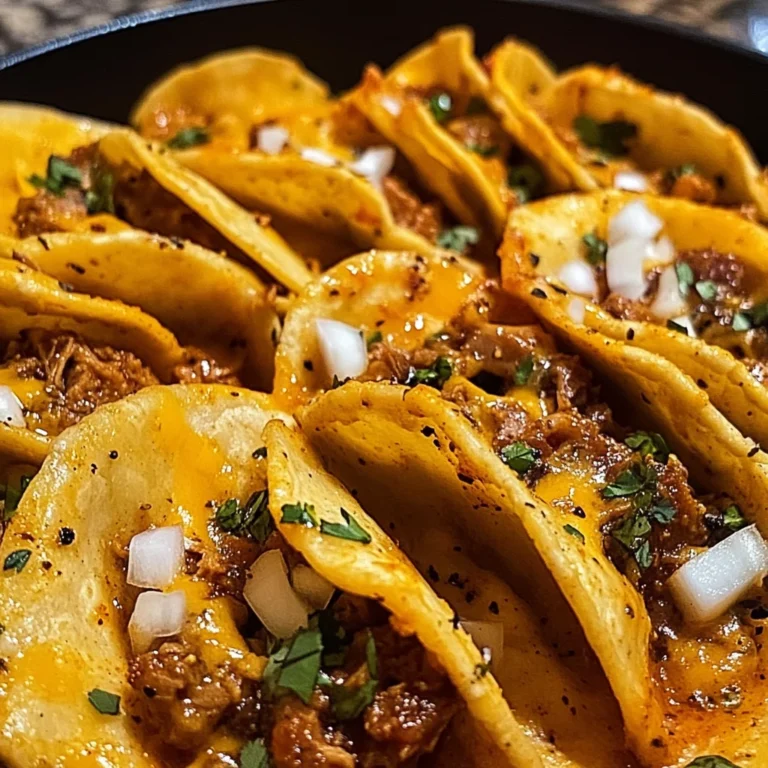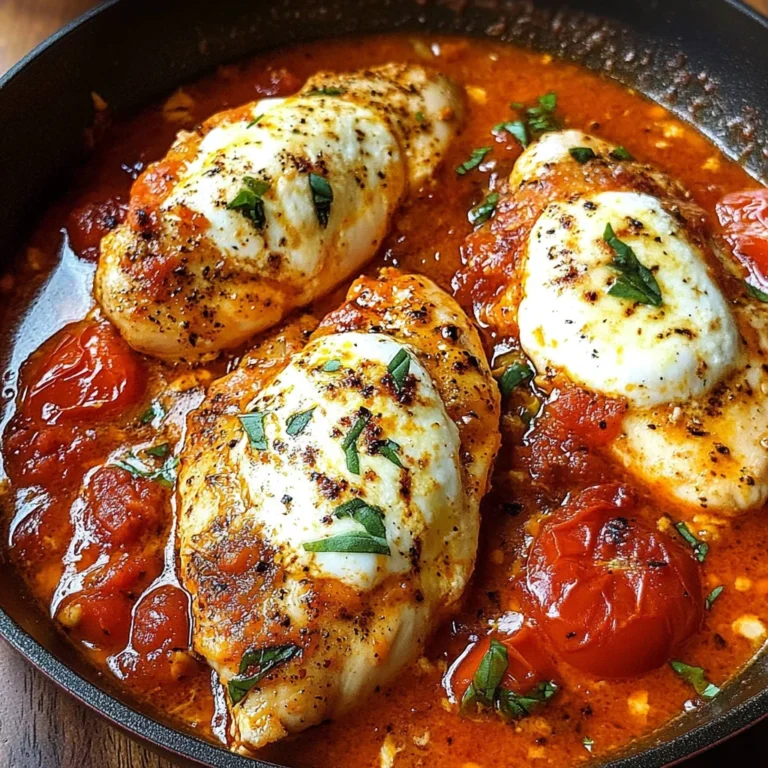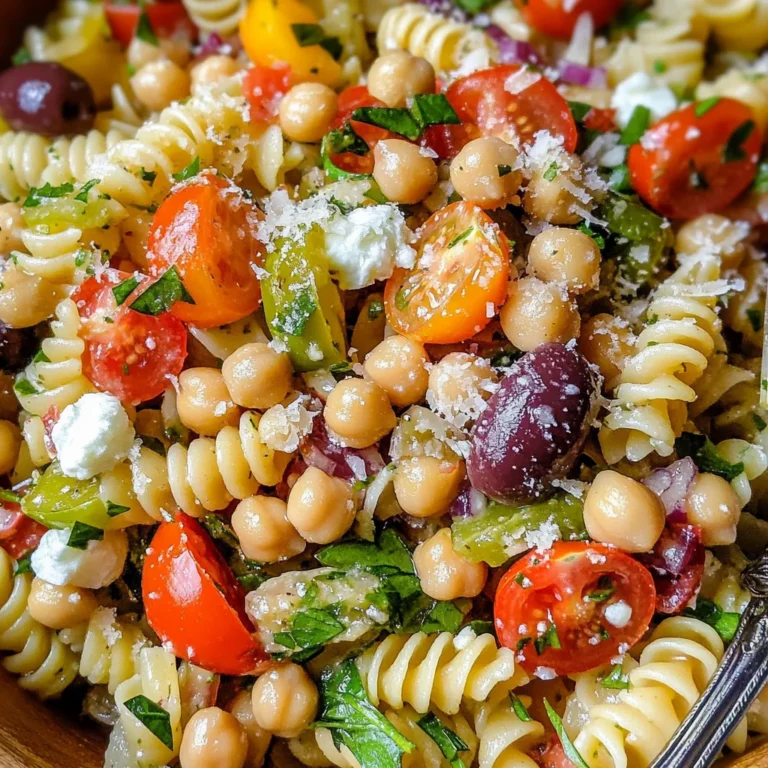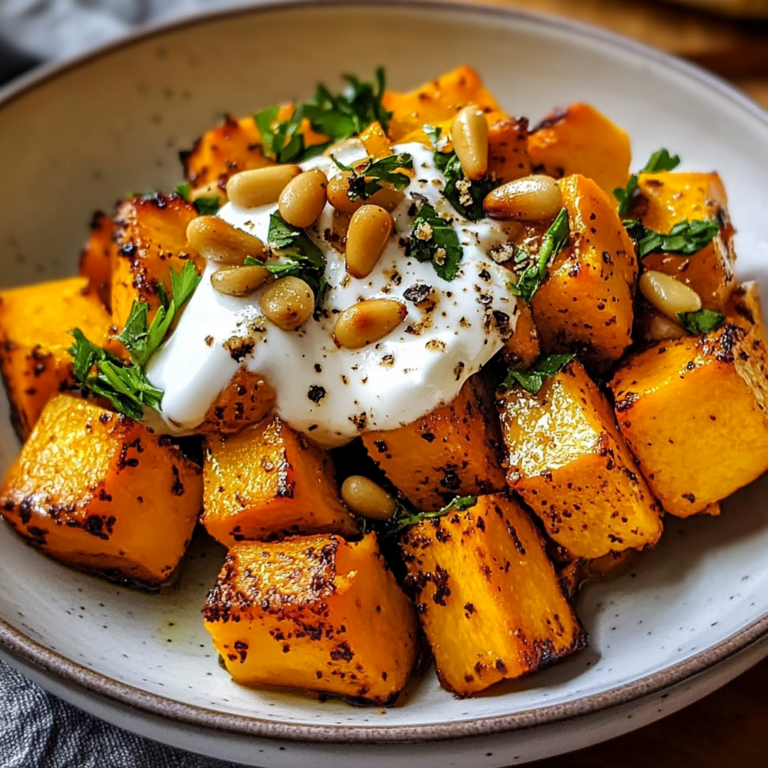Japchae
Japchae is a delightful Korean dish that showcases the unique flavor and texture of sweet potato glass noodles. This dish is celebrated not only for its vibrant colors and comforting taste but also for its versatility, making it suitable for various occasions, from family gatherings to cozy weeknight dinners. The combination of tender beef, fresh vegetables, and a savory sauce creates a satisfying meal that can easily be adapted to suit your preferences. Whether you stick to the traditional recipe or make it your own by adding different proteins or spices, Japchae is sure to impress everyone at the table.
Why You’ll Love This Recipe
- Easy to Make: Japchae can be prepared in just an hour, making it perfect for busy weeknights.
- Flavorful Experience: The combination of sweet and savory flavors will delight your taste buds.
- Customizable: Feel free to substitute beef with chicken, tofu, or even shrimp based on your dietary preferences.
- Nutritious Ingredients: Packed with vegetables and lean protein, this dish is both healthy and satisfying.
- Great for Any Occasion: Serve it as a main dish at dinner parties or as a side at family gatherings.
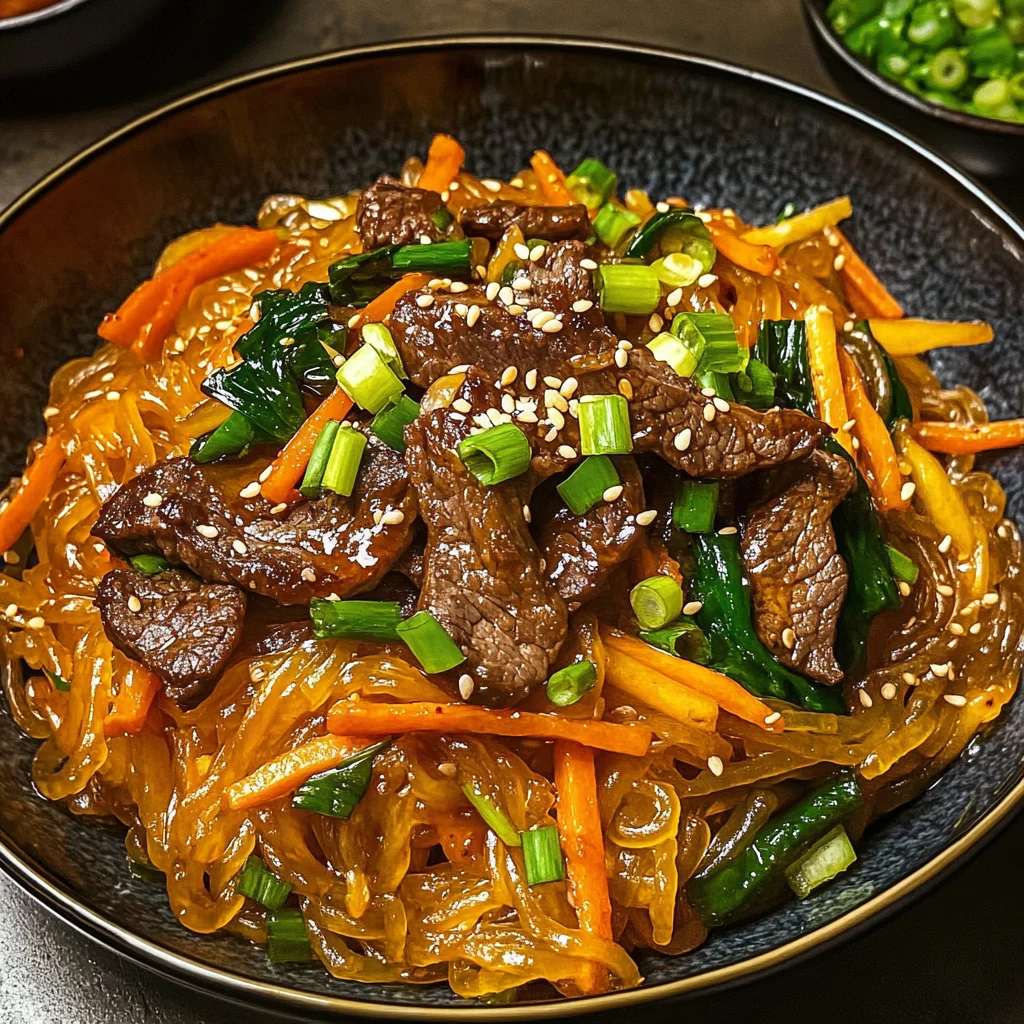
Tools and Preparation
To create this delicious Japchae, you’ll need some essential tools that help streamline the cooking process.
Essential Tools and Equipment
- Large pot
- Skillet
- Cutting board
- Chef’s knife
- Mixing bowl
Importance of Each Tool
- Large pot: This is essential for boiling the sweet potato noodles evenly until they reach the perfect chewy texture.
- Skillet: A good quality skillet allows for quick stir-frying of ingredients, ensuring they cook evenly and retain their vibrant colors.
Ingredients
For the Beef
- 2 lb thin-sliced beef (or sub with chicken, tofu, or shrimp)
For the Noodles
- 1 lb Korean sweet potato noodles (glass noodles)
For the Vegetables
- 3 medium carrots, julienned
- 1 large white onion, thinly sliced
- 1/2 bunch green onions, chopped
- 6 garlic cloves, minced
- 1/2 lb spinach leaves
For Cooking
- 4 tbsp sesame oil (divided)
- 1 tbsp olive oil
- 6 tbsp soy sauce (or tamari for gluten-free)
- 3 tbsp brown sugar
How to Make Japchae
Step 1: Prepare the Noodles
- Bring water to a boil in a large pot with a drizzle of olive oil.
- Add sweet potato noodles and cook for 5-6 minutes.
- Drain and set aside.
Step 2: Cook the Beef
- In a skillet over high heat, cook beef until browned.
- Season with half the soy sauce, sesame oil, and brown sugar while cooking.
- Set aside once browned.
Step 3: Sauté the Vegetables
- In another skillet, heat olive oil over medium-high heat.
- Add julienned carrots and onion; cook until softened.
- Stir in remaining soy sauce, sesame oil, and brown sugar.
- Mix in garlic and green onions; cook for another minute.
Step 4: Combine Spinach and Noodles
- Add spinach to the vegetable mixture; stir until wilted.
- Combine all cooked veggies with beef in a large bowl with the noodles.
Step 5: Serve
- Toss all ingredients well until evenly mixed.
- Serve warm garnished with extra green onions if desired.
Prep Time: 30 minutes
Cook Time: 30 minutes
Total Time: 1 hour
Nutrition Facts: Calories: 489 per serving
How to Serve Japchae
Japchae is a versatile dish that can be served in various ways to enhance your dining experience. Whether it’s a special occasion or a cozy family meal, these serving suggestions will elevate your Japchae presentation.
As a Main Dish
- Serve Japchae as the star of your meal. This dish is filling enough on its own and can be enjoyed with just a side of kimchi.
In a Lettuce Wrap
- Use fresh lettuce leaves to wrap portions of Japchae for a fun and interactive dining experience. This adds a crisp texture that complements the noodles perfectly.
Topped with Protein
- Add grilled chicken, shrimp, or tofu on top of your Japchae for an extra protein boost. This variation increases flavor and makes it even more satisfying.
With a Side Salad
- Pair Japchae with a light cucumber or seaweed salad. The refreshing crunch of the salad contrasts nicely with the chewy noodles.
Garnished with Sesame Seeds
- Sprinkle toasted sesame seeds over your Japchae before serving. This adds an extra layer of flavor and visual appeal.
How to Perfect Japchae
To achieve the best results with your Japchae, consider these essential tips that enhance flavor and texture.
-
Use fresh ingredients: Fresh vegetables contribute vibrant flavors and textures to your dish, making it more appealing and nutritious.
-
Don’t overcook the noodles: Cook sweet potato noodles just until tender; they should retain some chewiness for the best texture.
-
Stir-fry quickly: Keep cooking times brief to maintain the crispness of vegetables. Quick stir-frying helps preserve their nutrients.
-
Balance flavors: Adjust soy sauce and sugar levels to find your preferred sweet-salty balance. Taste as you go for optimal seasoning.
-
Let it rest: Allowing completed Japchae to sit for a few minutes before serving can help the flavors meld beautifully.
Best Side Dishes for Japchae
Serving side dishes alongside Japchae can create a well-rounded meal. Here are some great options to complement this delightful noodle dish.
-
Kimchi: A classic Korean side, kimchi provides tangy, spicy flavors that pair wonderfully with the sweetness of Japchae.
-
Korean Fried Chicken: Crispy fried chicken adds crunch and richness to your meal, making it perfect for special occasions.
-
Pickled Radish: These bright yellow pickles offer a refreshing contrast to Japchae’s rich flavors and are easy to prepare.
-
Steamed Broccoli: Lightly steamed broccoli brings color and nutrients, enhancing the overall healthiness of your meal.
-
Spicy Cucumber Salad: A cool, spicy salad adds zest and freshness that balances out the hearty noodles.
-
Rice Paper Rolls: Fill rice paper rolls with fresh veggies and herbs for an additional crunchy element alongside your warm dish.
-
Miso Soup: A light miso soup provides warmth and depth, making it an excellent starter before enjoying your main course.
-
Seaweed Salad: This savory salad adds umami flavors that complement the sweetness of Japchae beautifully while providing extra nutrients.
Common Mistakes to Avoid
Making Japchae can be simple, but a few common mistakes can affect the final dish’s taste and texture.
- Using the wrong noodles: Not all noodles are suitable for Japchae. Be sure to use Korean sweet potato glass noodles for the authentic chewy texture.
- Overcooking the vegetables: Cooking vegetables too long can make them mushy. Stir-fry them just until they are tender but still vibrant.
- Skipping the seasoning: Failing to properly season each ingredient can lead to bland flavors. Make sure to season your beef and vegetables adequately.
- Not draining the noodles properly: If you don’t drain the noodles well after cooking, they can become soggy. Drain them thoroughly and let them cool slightly before mixing.
- Forgetting to toss everything well: If you don’t mix all ingredients properly, some parts might taste bland. Toss everything together in a large bowl to ensure even flavor distribution.
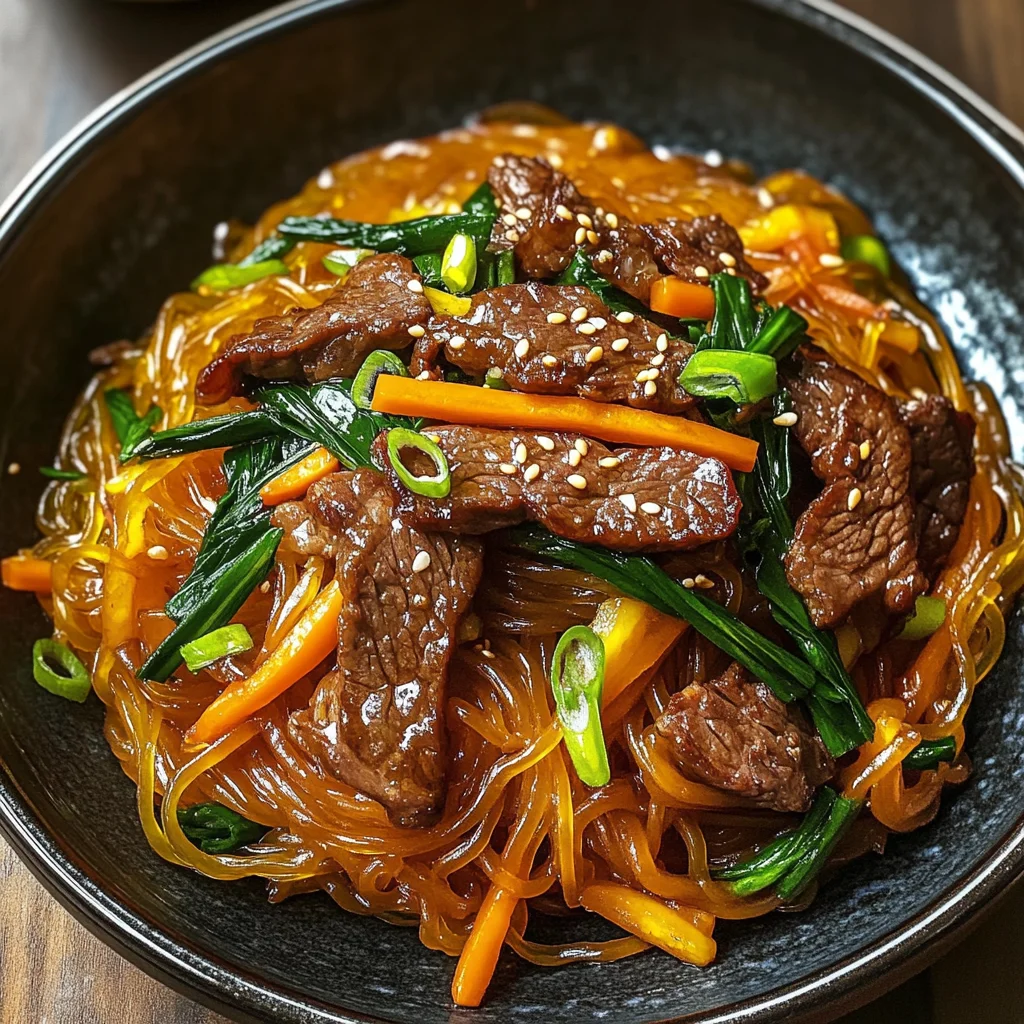
Storage & Reheating Instructions
Refrigerator Storage
- Store leftovers in an airtight container.
- Japchae can be kept in the refrigerator for up to 3 days.
Freezing Japchae
- Place cooled Japchae in a freezer-safe container or bag.
- It can be frozen for up to 2 months for best quality.
Reheating Japchae
- Oven: Preheat your oven to 350°F (175°C). Place Japchae in an oven-safe dish, cover with foil, and heat for about 15-20 minutes until warm.
- Microwave: Transfer Japchae to a microwave-safe bowl, cover it loosely, and heat on medium power for 1-2 minutes, stirring halfway through.
- Stovetop: Heat a skillet over medium heat, add a splash of water or oil, and stir-fry the Japchae for about 5 minutes until heated through.
Frequently Asked Questions
What is Japchae?
Japchae is a traditional Korean dish made from sweet potato glass noodles stir-fried with vegetables and meat, seasoned with soy sauce and sesame oil.
How do I customize my Japchae?
You can easily customize Japchae by adding different proteins like chicken or tofu or adjusting the veggies based on what you have available.
Can I make Japchae vegetarian?
Yes! Simply omit the meat and add more vegetables or tofu as a protein substitute to create a delicious vegetarian version of Japchae.
What should I serve with Japchae?
Japchae pairs well with rice as part of a larger Korean meal or can be enjoyed as a standalone dish alongside side dishes like kimchi.
Final Thoughts
Japchae is not only delicious but also incredibly versatile. With its balance of flavors and textures, it’s perfect for any occasion—be it festive gatherings or cozy dinners at home. Feel free to customize it with your favorite proteins and veggies for an even more delightful experience! Give this recipe a try and enjoy every comforting bite!
Japchae
Japchae is a comforting and flavorful Korean noodle dish that features sweet potato glass noodles stir-fried with an array of fresh vegetables and tender beef. This versatile recipe is not only visually appealing with its vibrant colors but also easy to customize, making it suitable for various dietary preferences. Whether you enjoy it as a hearty main course or a delightful side dish, Japchae is sure to impress your family and friends. With a perfect balance of sweet and savory flavors, this dish can be prepared in under an hour, making it ideal for busy weeknights or special occasions. Dive into the world of Japchae and savor every delightful bite!
- Prep Time: 30 minutes
- Cook Time: 30 minutes
- Total Time: 1 hour
- Yield: Serves 6
- Category: Dinner
- Method: Stir-frying
- Cuisine: Korean
Ingredients
- 2 lb thin-sliced beef (or chicken, tofu, or shrimp)
- 1 lb Korean sweet potato noodles
- 3 medium carrots, julienned
- 1 large white onion, thinly sliced
- 1/2 bunch green onions, chopped
- 6 garlic cloves, minced
- 1/2 lb spinach leaves
- 4 tbsp sesame oil (divided)
- 1 tbsp olive oil
- 6 tbsp soy sauce (or tamari)
- 3 tbsp brown sugar
Instructions
- Boil water in a large pot; add sweet potato noodles and cook for 5-6 minutes. Drain and set aside.
- In a skillet over high heat, cook beef until browned; season with half the soy sauce, sesame oil, and brown sugar. Set aside once cooked.
- Heat olive oil in another skillet over medium-high heat; sauté carrots and onions until softened. Stir in remaining soy sauce, sesame oil, brown sugar, garlic, and green onions; cook for an additional minute.
- Add spinach to the vegetable mixture until wilted; combine with cooked beef and drained noodles in a large bowl.
- Toss well until evenly mixed; serve warm garnished with extra green onions if desired.
Nutrition
- Serving Size: 1 cup (approximately 150g)
- Calories: 489
- Sugar: 7g
- Sodium: 620mg
- Fat: 20g
- Saturated Fat: 3g
- Unsaturated Fat: 14g
- Trans Fat: 0g
- Carbohydrates: 54g
- Fiber: 5g
- Protein: 26g
- Cholesterol: 60mg

